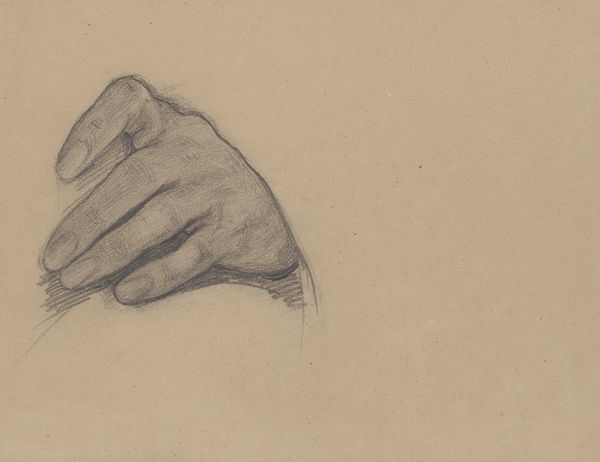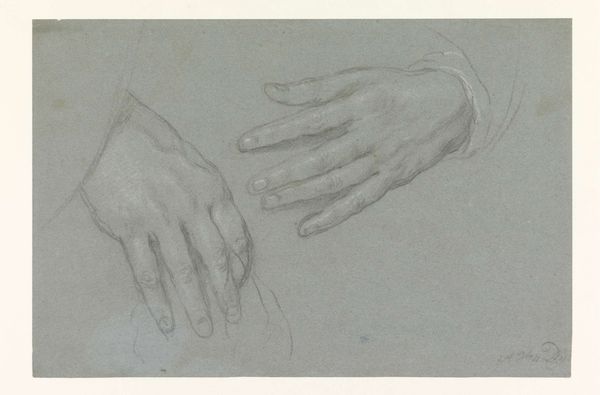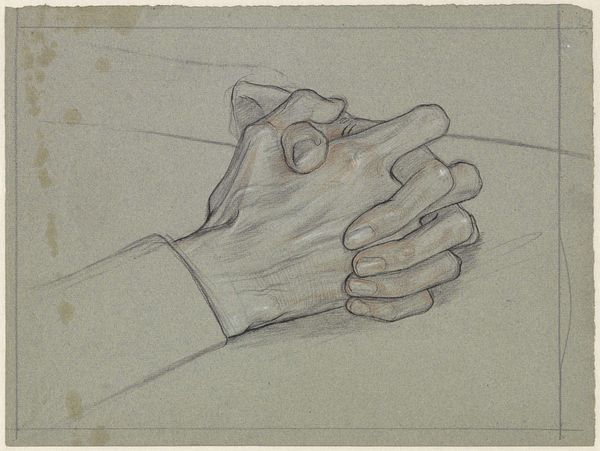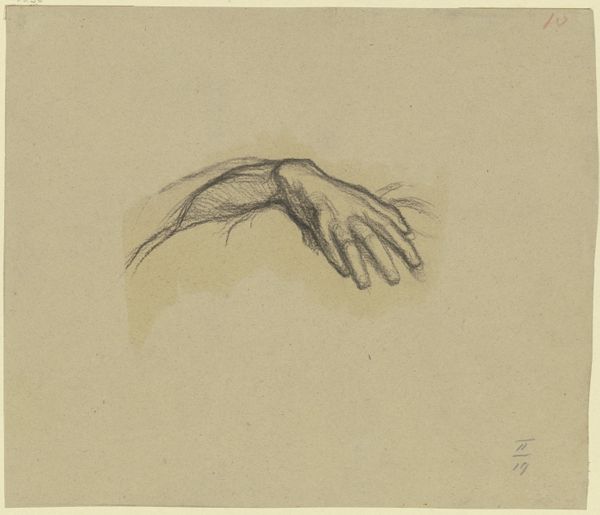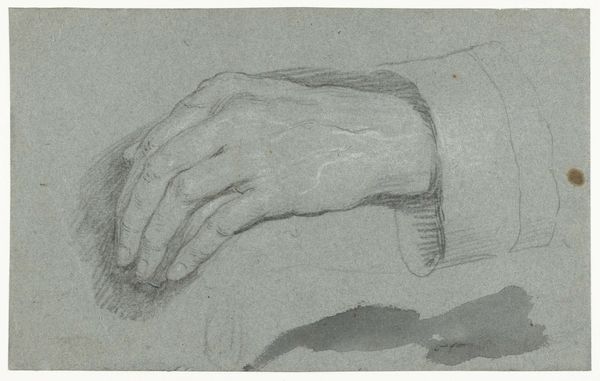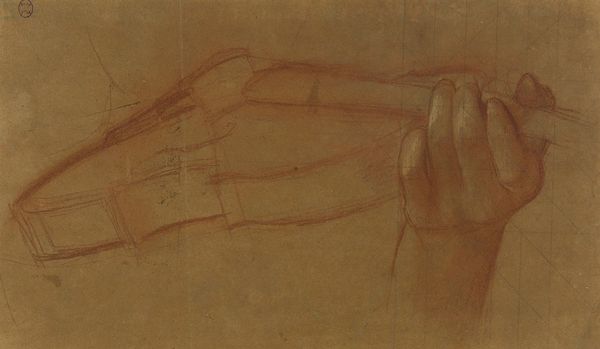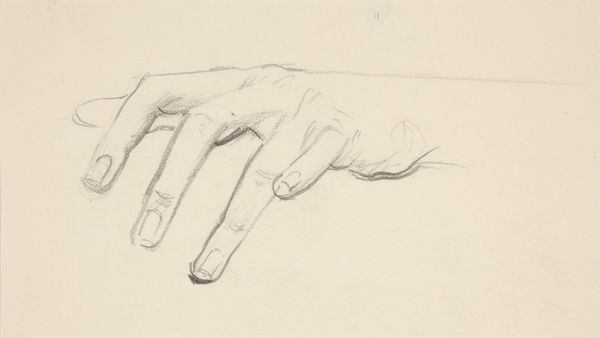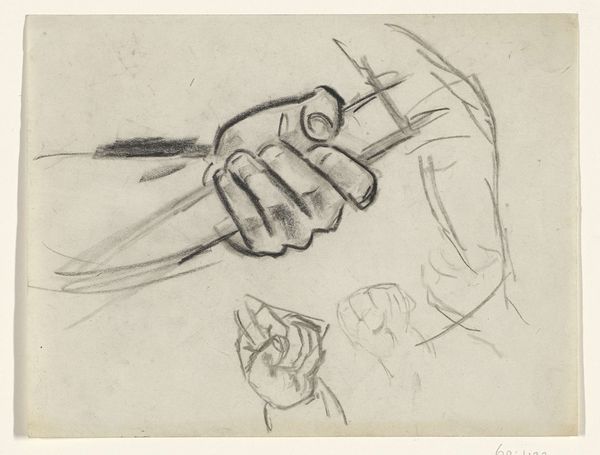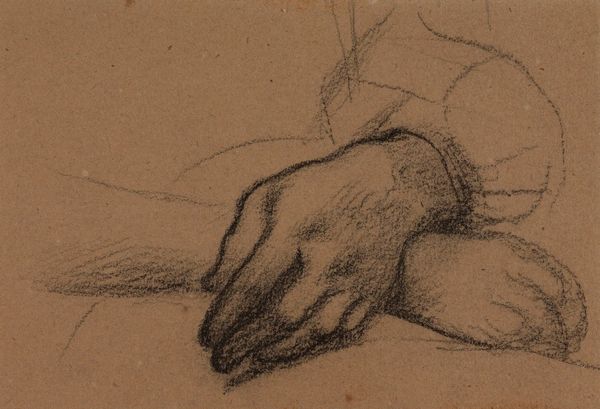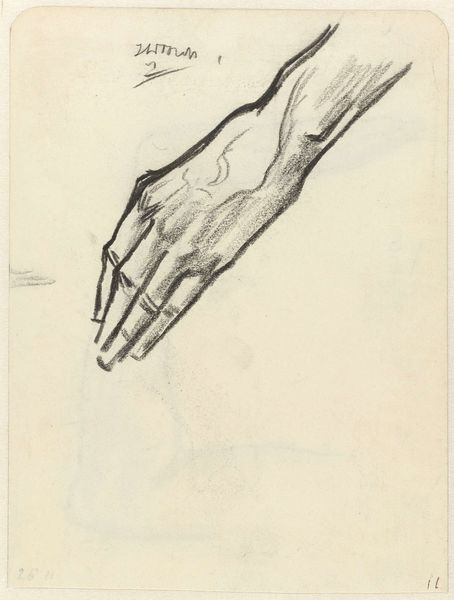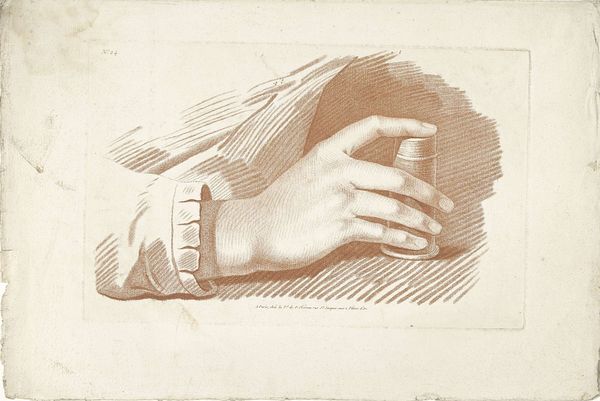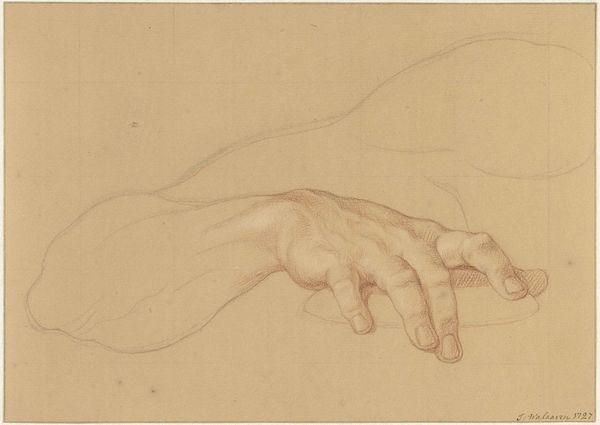
drawing, paper, pencil
#
portrait
#
drawing
#
dutch-golden-age
#
pencil sketch
#
paper
#
pencil
#
realism
Dimensions: height 147 mm, width 287 mm
Copyright: Rijks Museum: Open Domain
Curator: At the Rijksmuseum, we’re standing before "Gevouwen handen"—Folded hands—a pencil drawing on paper crafted sometime between 1878 and 1938. It’s attributed to Richard Nicolaüs Roland Holst. What’s your initial take? Editor: Somber. Immediately I’m drawn to the stark realism but almost with a sense of heaviness. Like those hands have seen a lot. Curator: Absolutely. Holst had such a keen eye for capturing detail with deceptively simple strokes. If you look closely, you see the life in those hands through subtle shading. It's far more than a mere technical exercise, wouldn’t you say? Editor: Precisely! See how the artist articulates the texture of the skin, the subtle curve of the fingers, or the tension in the wrist by using nothing more than graphite. There's a semiotic richness here; the hands themselves communicate fatigue and supplication. This transcends just observation—it's almost forensic. Curator: Yes, there’s a contemplative mood hanging in the air, right? One can sense stories within. It also strikes me how vulnerable hands can be, laid bare on a sheet of paper—a sign of the inner self laid out, as you say, for forensic study. It resonates deeply, given the world around us right now. Editor: That resonates—speaking of resonance, let us briefly dwell on the contextual clues! We know Holst straddled that transition between the Dutch Golden Age ideals and realism. One can interpret “folded hands” within religious, spiritual traditions signifying respect, prayer, or perhaps even mourning. The artist is working between traditions: the sacred and very immediate. Curator: Such insightful observations. Holst offers not just realism, he seeks to connect external form with internal sentiment, drawing upon recognizable artistic legacies while simultaneously crafting something very contemporary. Editor: And by stripping things back—using just pencil and paper—he gives an intimacy that a more flamboyant or ornate technique would probably overwhelm. Curator: True! Looking at "Folded Hands" today, it’s not merely the meticulous observation that grabs us but, perhaps, Holst’s gentle invitation to reflect, to find beauty in quiet emotion. Editor: Yes—a wonderful reminder about the emotional vocabulary residing within the simplest of lines.
Comments
No comments
Be the first to comment and join the conversation on the ultimate creative platform.
